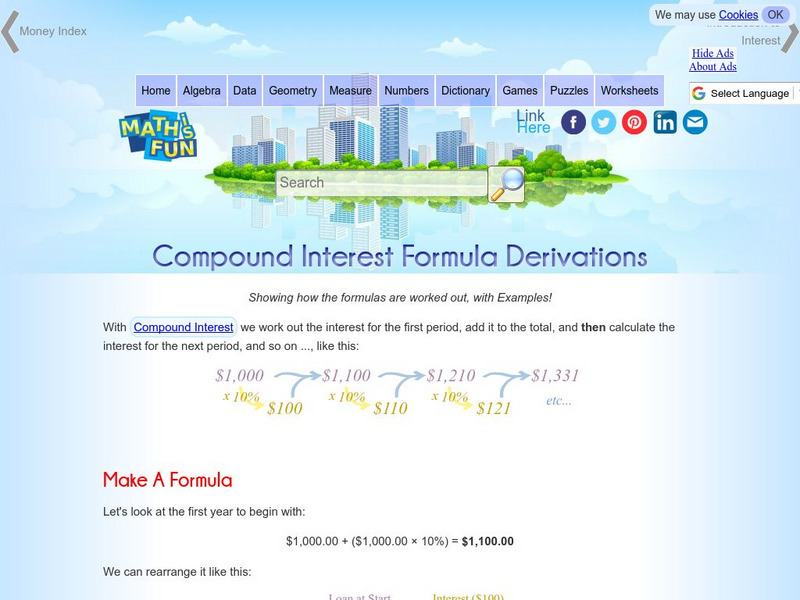Hi, what do you want to do?
US Mint
Coin Connections
Help young mathematicians make cents out of the US currency system with this two-part math activity. Children first learn the names and values for each type of coin, before learning to count and compare the values of coins using the...
Charleston School District
Equations of Linear Functions
Teaching linear function relationships using contextual information is beneficial to pupils' understanding. The lesson uses problem solving to build linear functions given different information for each problem. This is the second...
Charleston School District
Solving Systems with Elimination
Can you handle one more method? It just might be your favorite! Building on the skills learned in the previous lessons in the series, scholars now learn the elimination method. The video examines problems of varying difficulty.
Math Mammoth
Add & Subtract Integers Fact Sheet
Guide young mathematicians through the crazy world of negative numbers with a handy reference document. Offering clear instructions for adding and subtracting positive and negative integers, this resource is a great way to...
Charleston School District
Scientific Notation Operations
How do you operate with numbers in scientific notation? The resource provides examples on how to divide and multiply with numbers written in scientific notation. The handout and video also cover the procedure for addition and subtraction...
Math Is Fun
Math Is Fun: Present Value (Pv)
Explains how to calculate the future value of an investment based on present value, the interest earned, and the length of the investment term.
Math Is Fun
Math Is Fun: Compound Interest Formula Derivations
Looks at how the formula for calculating the effect of compound interest is derived and how it is used to create formulas for finding the Future Value, the Present Value, the Interest Rate, and the Number of Periods. Includes lots of...
Math Is Fun
Math Is Fun: Internal Rate of Return (Irr)
Explains, with examples, what an internal rate of return is, its uses, and how to calculate it using the net present value.
Math Is Fun
Math Is Fun: Investing (Introduction)
An introduction to investing. Touches on basic topics - how to reduce risk, comparing investments, and the importance of diversification.













